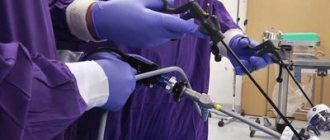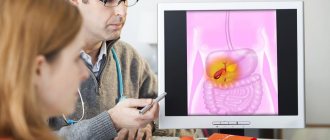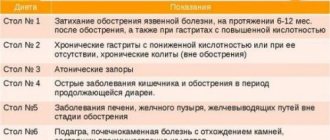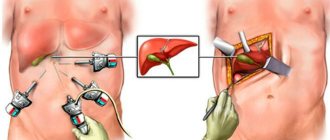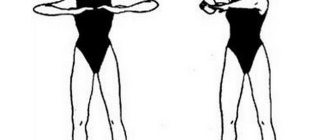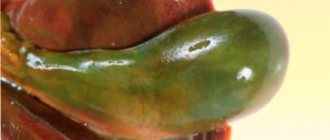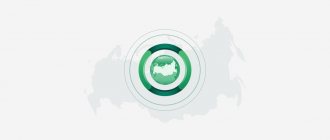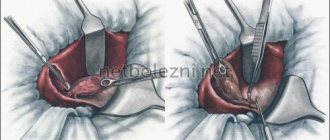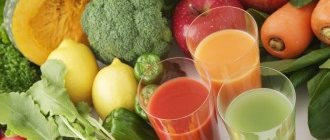The gallbladder is a kind of reservoir that is located in the right iliac region. The organ is needed to store bile produced by the liver. The bladder accumulates it, thickens it, and removes it into the lumen of the duodenum when food arrives. Bile not only dissolves fats, but also acts as a cleansing medium where hormones are utilized, toxins and poisons are neutralized, and the effect of pathogenic microorganisms is reduced.
Participation in the digestive processes determines the important role of this organ. Therefore, constipation after gallbladder removal is a common occurrence. They can be part of a whole complex of symptoms, the so-called postcholecystectomy syndrome (PCES).
The human digestive system can function without a gallbladder because bile is present in small quantities in the ducts and also flows directly into the duodenum as it is produced by the liver. However, in the absence of a “reservoir,” processes may be inconsistent. There are several mechanisms for the development of constipation after cholecystectomy; we will discuss this in more detail later.
After anesthesia
When carrying out the process of surgical removal of an organ, general anesthesia is mandatory. Lack of stool is the most common complication after using anesthesia, because the muscles and body of the person relax; poisoning of the body with substances contained in anesthesia. The functioning of the kidneys and liver is impaired.
The result is intestinal dysfunction. Restoring normal functioning of the entire body depends on the time of removal of toxic substances. The rate of release can be increased by drinking more water. Diet recommended. It is possible to restore damaged microflora using preparations with special bacteria. Doctors recommend microenemas: chamomile decoction, saline solution, oil solutions.
Post-surgery rehabilitation regimen to avoid constipation
After surgical removal of an organ, unpleasant consequences begin to occur - constipation. Rehabilitation of the human body after surgery begins from the first day after recovery from anesthesia.
After cholecystectomy
For the first day, it is better to refuse any food at all. It is undesirable to drink water, especially juices and drinks. The patient can only moisten his lips and it is permissible to irrigate the oral cavity with herbal infusions. On the second day, you are allowed to drink plain boiled water without sweeteners, with the addition of rose hips. One liter of liquid per day.
On the third day, compote made from dried fruits or tea is introduced. You should try to give drinks without sugar. You can use low-fat kefir. The volume of liquid increases to 2 liters.
On the fourth day after surgery, solid foods can be introduced into the diet. First, mashed potatoes, pureed vegetable soup. Cook food in plain water. You can sweeten your tea slightly with sugar. The main thing to remember is to eat a little, but often.
The introduction of new products into the patient’s diet should be gradual, every day. Porridges and soups are boiled in water. On the fifth and subsequent days, the menu includes crackers, stale bread, meat, and low-fat fermented milk products. Food should enter the stomach in pureed form.
After abdominal surgery
Such surgical intervention leads to adhesions in the abdominal cavity. The rehabilitation process with such an intervention is similar to the process described above, but with one nuance. On the fourth day, include vegetable salads, porridges cooked in water using coarse grains, and biokefir in the diet. At the same time, any foods and liquids that can cause gas formation in the intestines are excluded from the menu.
To prevent the appearance of cords and worsening constipation, the patient should begin to move as early as possible: get up, walk. In some cases, the surgeon prescribes mild laxatives.
After laparoscopy
Few people are familiar with the operation, which involves less intervention in the abdominal cavity than with open surgery. Work to remove the affected organ is carried out through small-diameter holes using special devices. The minimally invasive method of conducting operations does not seriously injure the body, there are no complications observed, and rehabilitation takes place in the shortest possible time.
But even this method is accompanied by constipation, especially if the gallbladder is removed. Treatment is prescribed by a doctor, strictly individually. There are some general recommendations that everyone should follow:
- The patient should avoid heavy physical activity.
- Avoid going to the sauna, bathhouse and other procedures involving high temperatures.
A diet is prescribed.
Features of cholecystectomy
Cholecystectomy - removal of the gallbladder.
Removing the gallbladder is called cholecystectomy. This operation is performed if the organ is affected by a disease that has a harmful effect on the body. These conditions include the following:
- acute cholecystitis that cannot be treated with medications;
- chronic cholecystitis, which does not allow bile to pass normally into the intestines;
- empyema – purulent inflammation; gangrene;
- cholelithiasis, with formations that cannot be removed by other means;
- malignant and benign formations;
- traumatic injuries.
Acute cholecystitis is treated with medications. However, they do not always help. If the condition worsens, the temperature rises, surgery is indicated. For purulent inflammatory processes, gangrene, and tumors, there is no other way except surgery.
In case of cholelithiasis, they look at the characteristics of the individual patient’s condition. If the stones can be crushed with a laser, this manipulation is carried out first. Complete removal of the bubble is resorted to only if it is impossible to get rid of the stones in any other way.
There are two types of cholecystectomy: through opening the abdominal cavity and using a laparoscope and other instruments that are inserted through small incisions. The second method is called minimally invasive.
It is considered low-traumatic, therefore in recent years it has been preferred in many clinics. Another advantage of this method is the ability to avoid the formation of a hernia after surgery, as often happens after removal of the gallbladder by completely opening the abdominal cavity.
This video will tell you about diarrhea after gallbladder removal:
What to do during treatment
The normal process of treating constipation depends entirely on the causes that caused it. There are general tips:
- If the cause of discomfort is anesthesia - up to eight glasses of water throughout the day, excluding tea, juices, and drinks. Water helps the intestines remove stool by softening it.
- Prunes help very well. The tincture can also be consumed raw.
- The diet must include: buckwheat, oatmeal, cabbage, bran, carrots, whole grain bread.
Drug treatment
To treat constipation, the pharmaceutical industry produces a mountain of new drugs every day, which are not always effective when the gallbladder is removed. Surgeons-doctors try to relieve the patient of intestinal dysfunction without resorting to medications, but if there is a need, then below are the drugs used in the treatment of constipation.
Guttalax
The body does not get used to this medication; it has a mild effect on the intestines for 6-10 hours. It is recommended to take 20 drops at a time, dissolved in boiled water. Sold without a doctor's prescription.
Bisacodyl
Also has a gentle effect. Available in tablets and in the form of dragees and suppositories. The result is expected within 8 hours after taking the medicine or tablet orally, and within 1 hour after inserting the suppository rectally.
Microlax
Available in the form of microenemas. It is administered rectally. Promotes the dissolution of feces and their gentle removal. The drug acts as follows: it displaces bound fluid from the stool, due to which the intestinal lumen increases and bowel movements are facilitated. The drug begins to remove feces within 15 minutes.
Fortrans, bekunis, probiotics, ointments also help in the fight against constipation and are prescribed by a doctor on an individual basis. It is important to remember that laxatives should not be abused. This can lead in the future to a complete failure of intestinal motility.
Causes of diarrhea
Diarrhea leads to loss of fluid in the body.
Features of intestinal functioning are determined by the action of several factors. Substances that stimulate the functioning of this organ and the movement of food are constantly supplied there.
Bile is considered the main stimulant. With a healthy gallbladder, it is released by this organ immediately after food intake.
The gallbladder contracts after receiving a signal about a new portion of food. When there is no gallbladder, bile flows almost constantly.
At the same time, the intestines constantly receive stimulation, pushing it to increased contractions. This is the main cause of diarrhea after removal of this organ. However, after removal of the bladder, bile is not so concentrated, so if you follow doctor's orders, you can avoid diarrhea. Of course, the patient’s diet is of great importance, but also the condition of other digestive organs.
ethnoscience
Recipes have been passed down from century to century and are effective even today. They take into account the substances the body needs to combat the difficulties that arise. Alternative medicine offers for constipation:
- Beetroot juice. By passing it through a juicer, juice begins to release from the beets. Take 0.5 liters per day. The first 250 grams are drunk in the morning on an empty stomach, and the rest is drunk throughout the rest of the day.
- Potato juice. Prepare 150 ml. You should only drink in the morning before meals.
- Carrot and pumpkin juices. Vegetables are passed through a juicer. Drink no more than 1 glass per day on an empty stomach.
Constipation in children
Children are also often susceptible to the problem of lack of regular bowel movements. The reasons for this can be very different, the main thing is to detect it at the right time and prevent even greater complications from developing. Treatment of constipation in a child is the same as in an adult. It is undesirable to focus on taking laxative medications.
The process of eating should be divided throughout the day (5 times). Foods containing fiber (vegetables and fruits) are eaten; they are consumed boiled or raw. It is advisable to add cabbage, lean meat, porridge from coarse cereals, prunes, oranges. Carbonated drinks, canned and fried foods should be excluded from the diet.
Consequences of cholecystectomy
You need to eat in small portions and more often.
Patients before surgery are concerned about their condition after surgery. They are concerned about the state of the body after removal of this organ.
In order to understand the situation, it is necessary to analyze the features of fat digestion in humans in the absence of a gallbladder.
After the operation, the bile duct remains, which becomes the source of bile entering the intestines.
It will not accumulate and concentrate, but will immediately flow in small portions, participating in the digestion of incoming food. Since there is no such strong concentration as before, bile will have a weaker effect on fats. To avoid problems with digestion, you must follow several rules:
- Eat in small portions and more often so that the incoming food is completely processed by bile.
- There should not be long breaks in eating, otherwise the bile, which flows constantly, will remain unclaimed and will negatively affect the digestive organs themselves.
- The amount of fat in food is reduced, because now the bile is not so concentrated and it is difficult for it to process a lot of fatty foods.
- Foods that stimulate intestinal motility are excluded from the diet.
- Changes in intestinal motility can cause diarrhea.
